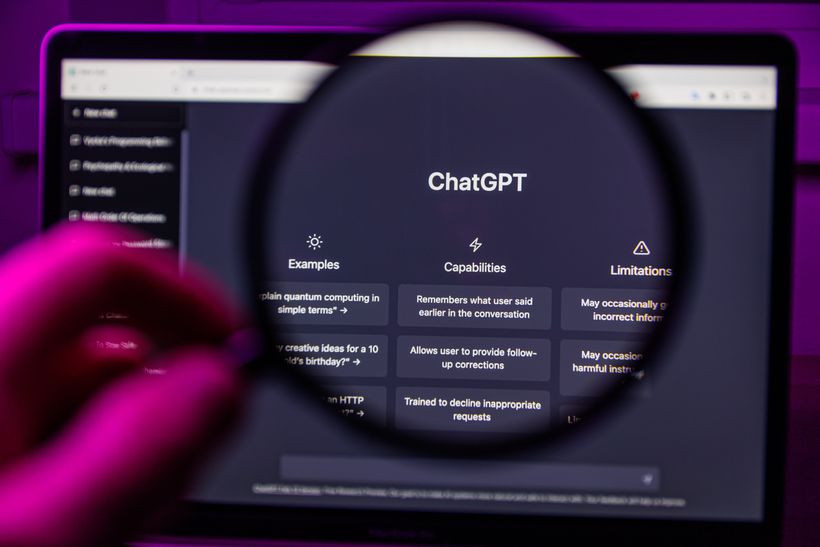As business continues to evolve at an unprecedented rate, companies need new ideas and strategies that help them rapidly transform to keep pace and grow. This explains the massive popularity that expert networks are having as companies look to connect with subject-matter experts with specialized sector and functional expertise who can accelerate their transformation efforts.
Expert networks now represent a multi-billion dollar industry, helping companies in a variety of ways.
From helping build primary research to assessing new market or acquisition opportunities to conducting due diligence for new technology purchases or competitive benchmarking, expert networks provide a valuable service.
While many companies are increasing their use of traditional expert networks, there is also a trend toward organizing and developing internal talent by implementing a "knowledge management platform" or "employee skills marketplace." These can also be extended to engage broader audiences when experts are listed publicly as part of an Expert Center, Media Room, or Speakers Bureau. Depending on the scope and market visibility organizations wish to commit to in sharing their expertise, such programs can yield the following benefits:
- Improved access to shared knowledge throughout the organization
- Faster innovation through an improved discovery of key experts available for project opportunities
- Higher amount of cross-functional engagement between departments
- A more collaborative relationship with employees through better knowledge engagement and skills development
- Less reliance on outside consultants and traditional expert networks
- Improved brand reputation by engaging experts in thought leadership activities
- Increased media coverage and speaking engagements
- Improved business development opportunities by engaging experts earlier in the sales process
- Improved connection with the local community
- Additional ways to foster Diversity, Equity, and Inclusion throughout the organization
What is an expert network?
An expert network is a service that matches clients with experts who are willing to share their knowledge and advice via short conversations.
These are usually in the form one hour long expert interviews conducted with the client. Expert networks such as GLG, AlphaSights, Guidepoint Global, Third Bridge, and Coleman Research help match the client's interest to specific experts in their private database of experts on call. They also look after logistics such as scheduling the expert interviews and have detailed processes for qualifying experts to ensure compliance with the exchange of information. And they handle time tracking and billing of interviews which are typically charged based on an hourly rate. They also handle the payment of fees to the experts following the interview.
Building your own knowledge platform
There is a growing trend towards organizing their expertise given the profound challenges organizations are facing. And these challenges didn’t just start when the pandemic hit. In a recent Deloitte survey, 63% of executives reported that work in their organizations is currently being performed in teams or projects outside of people’s core job descriptions, 81% say work is increasingly performed across functional boundaries, and 36% say work is increasingly being performed by workers outside of the organization who don’t have defined jobs in the organization at all.
Yet fewer than half (42%) of respondents say their organization’s job descriptions do an “excellent job” of specifying the work that needs to be done in their positions. As work becomes far more fluid, packaging skills into rigid job descriptions leads to a lot of untapped human capital in organizations. It’s an issue that hasn’t gone unnoticed by leadership. Research shows that only 18% of executives strongly agree that their workforce is using their skills and capabilities to their fullest potential.
85% of HR and business executives say organizations should create more agile ways of organizing work to improve speed and swiftly adapt to market changes.
These issues underscore the need to better organize and develop internal talent by implementing a "knowledge management platform" or "employee skills marketplace." This is for a variety of reasons. With vast amounts of acquired knowledge pooled across various departments and teams, it can be difficult for other employees to access this knowledge when it is outside their area of expertise - as the old saying goes, “people don't know what they don't know.” Organizing your expertise for external audiences also can provide huge benefits for building reputation, relationships, and revenues.
How to position your experts as industry thought leaders
More and more organizations are looking at employees who can advance their innovation efforts internally, often as part of a cross-functional team or special project. And there are also important revenue-generating activities, such as sharing research and perspectives through content generation (blogging, webinars, podcasting) or speaking (at internal events, industry conferences, or as an expert source for media interviews).
Determining how to best identify and put experts to work isn't a simple process. That's because to do this right requires a more disciplined approach to assessing and developing the talent across your organization. One that goes beyond linear career paths and traditional job titles we assign to employees. It also requires a more progressive approach to diversity and experience. One that is not simply correlated to seniority or authority in an organization.
Given the current state of the talent market, most organizations are also recognizing the importance of managing their talent, listening more to employees, and helping them achieve their goals - both professional and personal. And that extends to how best to tap into their skills that can benefit the organization both internally and externally. That's why we developed a talent framework that helps identify opportunities where subject-matter experts can best contribute as well as potential options for professional development.
To make this process more intuitive, we have developed a model that outlines 4 "expert personas" that detail the various characteristics related to experts in an organization along with a potential development path.
Level 1: Experts in the "Practitioner" persona group can offer their organizations a wide range of skills. Our research and in-field experience with companies focused on innovation reveals that organizations can realize significant gains by tapping into this broad pool of talent.
To better engage practitioners, we have helped universities better engage their Ph.D. candidates who are approaching graduation to conduct research and writing content that promotes their work and institutional brand to prospective students or donors.
This also extends to corporate innovation. A recent example of this was our collaboration with a Fortune 500 company in the CPG sector, where we completed the build of an internal expert network. One of the key challenges this organization faced was the inability to quickly engage with “practitioners” - subject-matter experts across the organization who could help with specific R&D and innovation projects. While this organization had legacy HR and intranet communication platforms, they had experienced a number of challenges engaging their researchers. To make things worse the pandemic forced many to work from home, creating the need for more opportunities to engage online. They needed the ability to conduct simple searches to find other researchers relevant to their work who could help them with projects. Our research/writing team started the process by taking an inventory of experts and then developed profiles for each researcher in collaboration with the company’s research/innovation team using the ExperFile SaaS software platform.
With the unique data structure used to categorize this broader set of biographical information, we then enabled advanced search capabilities to build a private, SOC2 (security) compliant expert network which was easily integrated into their existing talent platforms. With thousands of researchers across the globe, they now have the ability to quickly search for experts on areas such as skills, topics, work experience, research publications, company/industry experience and IP/patents. It’s important to note that activating all this hidden expertise not only lays the groundwork for faster innovation. It also can reduce the fees associated with outside expert networks and consultants, maintains tighter internal control of proprietary research information and forges stronger collaborations between experts across the globe.
Level 2: The "Ambassador" category represents experts with a more developed set of skills and a reputation both inside their organization and within their community of practice. Working with them to generate more exposure through internal speaking engagements and within their local community is a great way to create market visibility. For example, we have worked with a number of professional services firms to make experts at this level more visible in their local markets. Building reputation and generating new client opportunities with thought leadership activities such as blogging, webinars and speaking at local business events or on podcasts is a proven way to tap into this talent. These activities have allowed organizations we have worked with to bring in new clients and increase revenues across various practice areas. Ambassadors are also perfect for involvement in on-campus recruitment events where competition for talent is high. Particularly in fields such as engineering, law and accounting. One way to make these experts more approachable to a wider audience is by creating a speaker’s bureau. Remember that not all your experts will be comfortable speaking to the media, however, they can still meaningfully contribute as a keynote speaker or panelist at an event. Organizing your experts on key topics enables local event and conference organizers to find you more easily in Google search results and on your website. In addition to getting your experts on the podium, it’s a proven way to get your expert's guest appearances on webinars and podcasts. Given the growing importance of these channels, we recently formed partnerships with the leading marketplaces for webinars and podcasts - BrightTalk and Podchaser to help our clients promote their experts for speaking opportunities.
Level 3: Experts in the "Authority" category have developed a strong reputation as an expert in their field, often speaking at academic or industry conferences. At this level, they have also developed a degree of proficiency in speaking as an expert source with the local or national media. They can be found speaking as a guest on podcasts to share their knowledge and are often active on social media. In higher education, these people are critical to helping media relations and other departments generate media coverage that is essential to building a reputation. We have worked with many organizations that effectively engage their Authorities by staying connected to their research and publications and collaboratively creating regular content with them to reach a broader audience.
You will find regular opportunities to boost coverage with local and national media by utilizing this group of experts. We work with media teams to conduct Google Search (SEO) analysis to identify what topics their target audiences are searching for. This allows them to more strategically focus on key experts to promote. They are also focused on delivering more engaging content formats such as video interviews and Q&A to boost Google PageRank and audience engagement across their website. And they are working collaboratively with their faculty to post media advisories and a regular stream of content that contributes to higher rates of discovery by journalists looking for expert sources.
Level 4: Experts in the "Evangelist" category are those go-to experts that you often see in the media as key spokespeople representing a certain topic. They are seen as notable authorities with deep domain expertise within their community of practice which has often been earned through heavy research and publications. Chances are they have also authored books that provide a path to speaking engagements at conferences and media interviews. These are also the people who have developed a regular audience through blogging or by hosting a podcast and have a well-established social media following. Ultimately, what separates this group from the others is the significantly broader market profile they have earned as a thought leader. These individuals have an intuitive sense of how to communicate complex topics in a relatable way that both educates and engages. That makes them particularly valuable to the organizations whose brands they represent.
Given the degree of qualifications required to operate at this level, it’s to be expected that you will find far fewer “evangelist” category experts in any organization. Many are naturally found within the ranks of the executive team. These are the people who are comfortable in interviews, and most have extensive public speaking experience appearing on a large stage and on radio and television. At this level, organizations need to be far more strategic about how they utilize this talent pool to build a reputation and reach a wider audience. We have seen first-hand how strategic thought leadership programs can build a platform for these experts that can pay huge dividends.
One healthcare system we have worked with recently forged a relationship with ABC News to feature one of their medical experts (a medical doctor) on a weekly segment related to important Covid-related health topics. Given the frequent appearances this expert has made on television, this was an earned media home run and a great way for this healthcare system to build visibility and trust within the community by providing accurate medical information. Their commitment to making their medical experts more discoverable and approachable online has also helped them promote their strengths in areas such as cardiology, neonatal, cancer, and genetic research. And the results are impressive. Over the past year, they have doubled their national media coverage and are currently outperforming much larger healthcare systems in their area.
How to organize your experts
Personas by their very nature are designed to provide a more standardized approach for planning using "clusters" of talent that are grouped against common characteristics. However, we're very aware that they cannot possibly capture all the nuances you will find within your organization when it comes to talent. But our experience helping leading organizations in knowledge-based industries to better manage thousands of experts shows that having a more methodical approach pays off. It optimizes the internal/external contributions and the development paths of experts to create win-win opportunities. but it also helps forge a stronger connection with employees who feel their organization is taking the development of their professional skills more seriously and more actively creating avenues for them to engage and contribute.
With an understanding of these personas, we can then focus on another important consideration - where can we best engage our experts to more effectively tap into their skills inside and outside the organization? To help answer that question, we developed a "Talent Assessment Grid" (TAG) that helps you identify key areas where each of these personas can contribute. As a planning tool, it's meant to provide a more organized approach that helps you assess your bench strength and create a more tangible system for measuring progress over time in areas such as skills development or contributions to cross-functional innovation projects or outside industry consulting. Playing to the individual strengths these experts have while moving them out of their comfort zone to develop additional skills also yields additional marketing benefits. Contributing content; speaking at conferences or community events or to the media are proven ways to build market visibility, establish trust and generate revenues - and experts play a vital role in this process.
A thriving network where knowledge is easily discoverable inside an organization and strategically shared outside in the community and beyond can make a huge difference in boosting innovation and culture. When properly promoted, these experts will also help you grow your reputation, relationships, and revenues. Although this process requires commitment, it positions you to be more agile and outperform your competition by ensuring you are optimizing every employee’s true potential and making them more discoverable both inside and outside the organization.
How are you putting your expert talent to work? Do you have a process you use today for identifying and engaging your experts?
We would like to hear from you. For more insights on how you can organize your experts online to support your internal knowledge management or promote them to a wider audience, visit us at https://expertfile.com/resources to learn more.





